Aloe vera has built a reputation in recent years beyond the garden or as a houseplant. This beautiful succulent plant has become a sought-after ingredient in cosmetics, and it even appears in cooking!
Aloe vera, or true Aloe, cultivated mainly for its rosette of narrow leaves in some countries, is in fact used for its gel and juice with many virtues.
Want to learn more about the nutritional qualities and benefits that Aloe vera brings to skin care and recipes? This tutorial is for you!
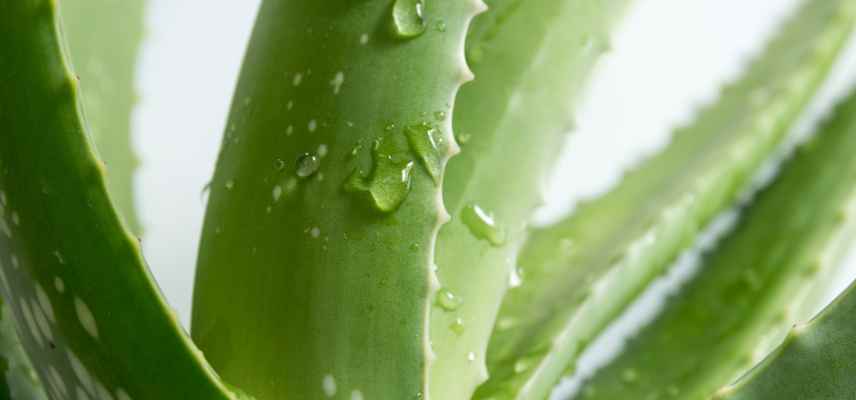
Aloe vera, a must among succulent plants
Aloe are sometimes confused with agaves even though they do not belong to the same family. Belonging to family Liliaceae, there are around 275 Aloe species worldwide. Aloe vera (Aloe barbadensis in Latin) is a species native to North Africa, but it has gradually been introduced and naturalised in many countries. It has been cultivated in Barbados since 1650 and is now mainly grown outdoors around Mediterranean basin, in rock gardens or exotic dry gardens.
Aloe vera does indeed need lots of heat and sun to grow well, requires very well-drained soil and does not withstand temperatures below −2 °C. It produces yellow flowers in mid-winter.
Its long dentate, fleshy leaves, of a lovely grey-green colour, allow it to store the water necessary for its survival in the arid medium where it originates. Behind this striking foliage, Aloe vera hides a juice with healing properties, renowned notably for treating burns.
Egyptians – who elevated it to the rank of sacred plant – as well as Romans, were already aware of this and used it in skin care preparations and in embalming rites.
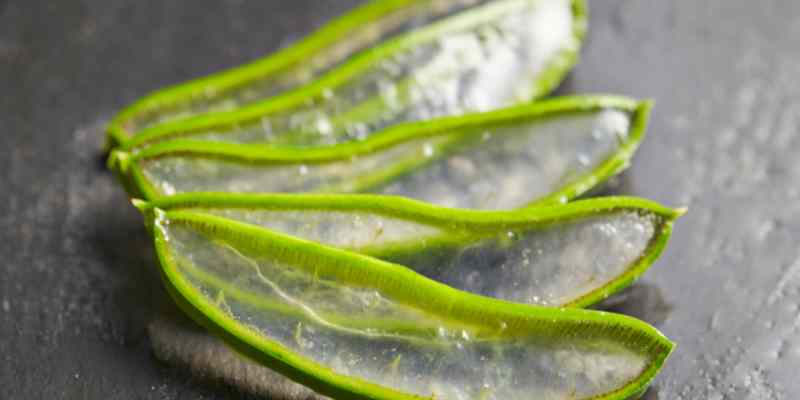
Aloe vera: nutritional, cosmetic and therapeutic benefits
Use of this exotic plant’s leaves for therapeutic purposes is therefore not new: from Antiquity, the precious gel was extracted to help heal wounds, burns and soldiers’ injuries. History records that Alexander the Great took plants on campaigns simply to treat and relieve his armies, a practice later followed by Christopher Columbus. Traditional Chinese medicine has used it for centuries for its laxative properties and in treatment of haemorrhoids, and it appears in most Arab and Indian civilisations, notably as an ancestral remedy in Ayurvedic medicine.
Today, its gel (mucilage) is used mainly for its hydrating and regenerating qualities for skin. Many cosmetic ranges increasingly include it in anti-ageing and dry-skin treatments. Rich in trace elements, amino acids and vitamins, it is said to act in the body as an energy booster. As in the past, gel can also be used to help heal certain wounds, speed recovery from blisters or soothe sunburn.
Important! However, repeated or excessive use can be irritating and dangerous for health. Moreover, use is not recommended for pregnant and breastfeeding women and children: read the updated recommendations from ANSES.
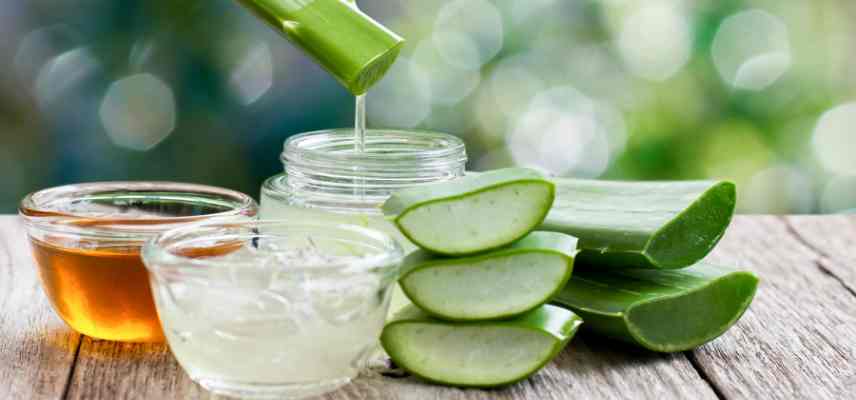
Harvesting, preparation and storage of Aloe
Harvest by cutting each leaf base with a sharp knife. Wash leaf. On a board, remove spiny edges so as not to injure yourself. To extract gel, it is essential to strip leaves of their outer skin. Cut leaf into several sections and run knife blade along tough outer skin to recover pulp easily. Rinse this gel under clear water to remove as much bitter latex as possible, coming from the inner wall of the leaves (recognisable by its yellow colour, rich in aloïne, which has laxative properties!). Only transparent gel without green or yellow traces should remain.
Note: plant, even if grown indoors, will produce new leaves. Aloe vera leaves are now easily found in some organic shops.
Leaves are ideally stored at room temperature once harvested. In cold, they lose flavour and nutrients. Once prepared, consume Aloe vera quickly to enjoy all its nutritional benefits.
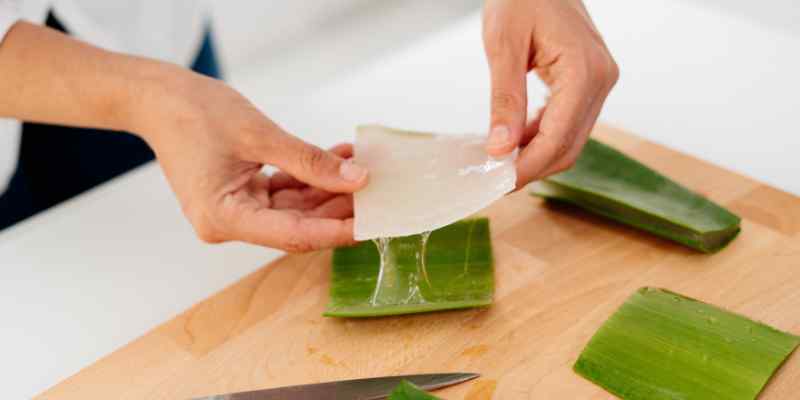
Aloe vera in cooking
First thing to remember: mucilage extracted from leaves must not be heated, it would lose all its precious qualities. Aloe vera is therefore used only in cold preparations. For cooking, use exclusively the transparent gel inside the leaf. Its taste is almost neutral; it mainly provides a binding texture in a salad or a juice.
Like nopal, a cactus widely used in Mexican cuisine, Aloe vera brings a touch of originality and, used sparingly, acts as a superfood. It pairs particularly well with lime, avocado, prawns, coconut, mango, etc. It is mainly found in Indian, Mexican and Thai cuisines.
Aloe vera-based salads
Based on avocado, mango, cucumber, prawns, king prawns or salmon, and herbs such as coriander or mint, Aloe vera adds an exotic note, either integrated into a vinaigrette (simply mix olive oil, lemon and Aloe vera gel), or cut into strips or small pieces directly in the salad. It can also be diced into a ceviche or included in Asian salads with rice vermicelli, cucumber, green papaya, nuoc-mâm and peanuts.
In smoothies
Simply blend its flesh with fruits — preferably exotic — such as pineapple, mango or banana, to make a smoothie that it thickens.
Homemade Aloe vera juice
To extract juice, pass gelatinous pulp from a leaf, cut into small pieces, through a juicer, food processor or blender with some water (300 ml for a 10–15 cm long leaf) and half a lemon’s juice. Add honey or agave syrup to sweeten and dilute the juice with more or less water to taste.
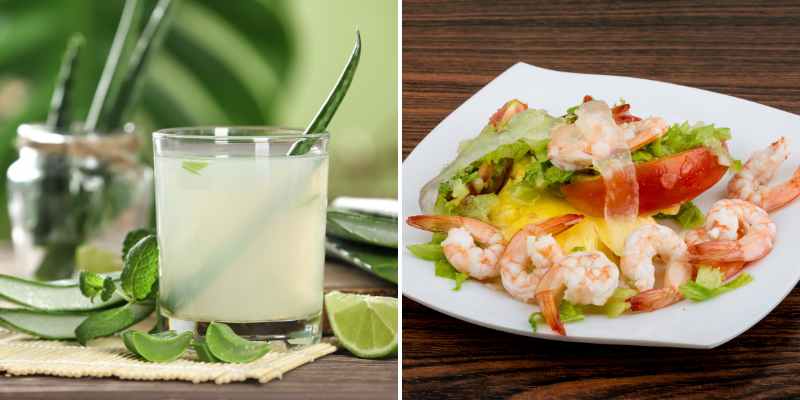
Aloe vera for beauty care
One of the simplest and most practical ways is to apply pure Aloe vera gel directly to a wound, burn or blister to benefit from its soothing and healing effect. Beware, we repeat, there must be no green or yellow residue. Leave on for 15 minutes, then moisten a cloth and remove the gel with the cloth.
For a soothing, hydrating homemade mask, mix two tablespoons of Aloe vera pulp with one tablespoon of plain yoghurt and one tablespoon of honey. Apply mask to cleansed face and leave on for 10 minutes. Rinse with warm water, using a cloth for ease, then dry face. As with all homemade treatments, patch-test first to check for any allergy to this plant compound.
Got homemade recipes? Don’t hesitate to share them with us!
Aloe vera: towards announced agricultural diversification…
It is therefore for gel production, but also for juice, that Aloe vera is mainly cultivated in many exotic countries and in Mediterranean countries. In France, this plant is currently attracting growing interest with climate warming, as it proves particularly resistant to drought. This enthusiasm has led some farmers or winegrowers converting in Occitanie to consider taking up this atypical crop, for example in Lot, Aude or Pyrénées-Orientales, which suffer from severe water deficits. Especially as the plant can withstand occasional frosts with light protection and can develop properly on increasingly desert-like soils, without pesticidal inputs. Aloe vera may, like pistachio trees, become a new diversification crop! Worth watching closely in coming decades on our territory…































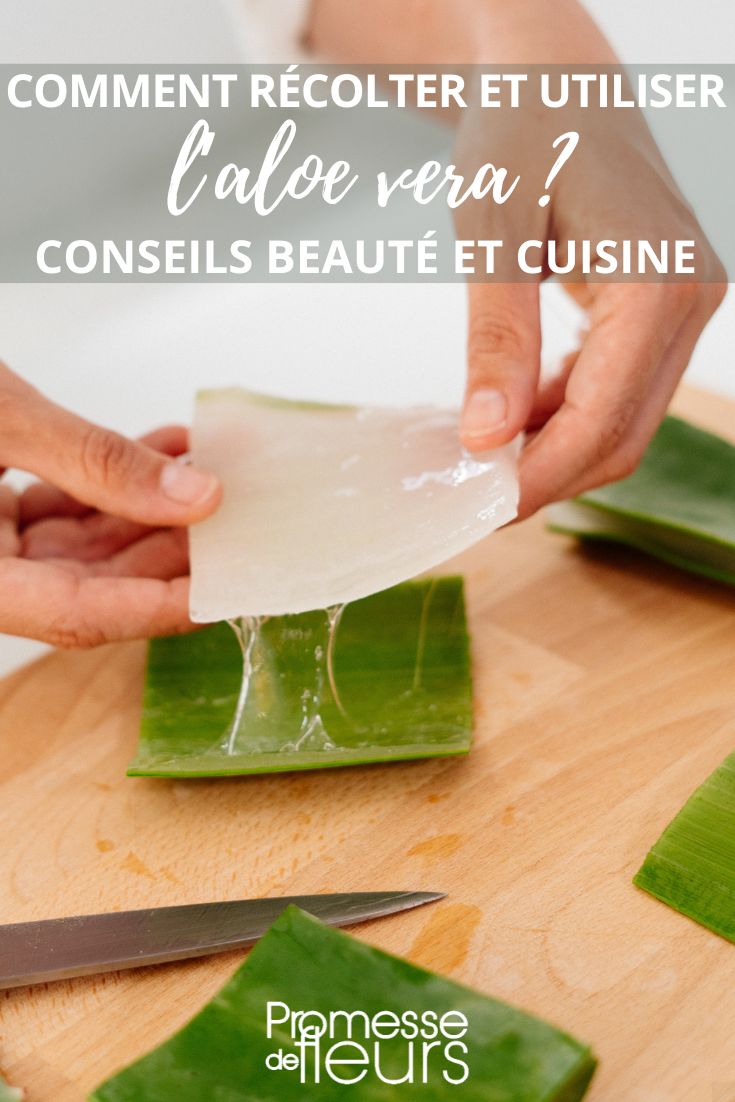
Comments